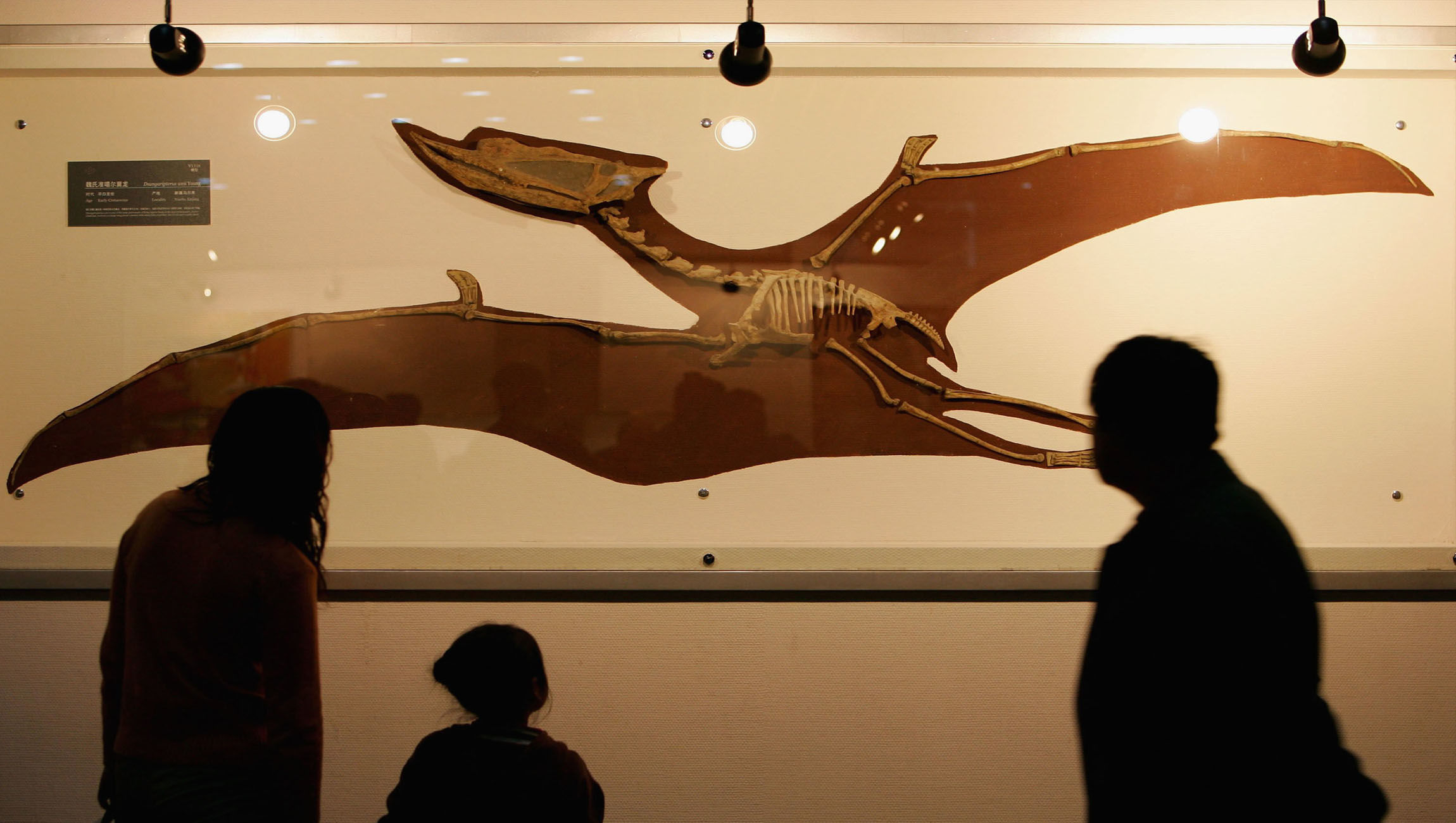Create a free profile to get unlimited access to exclusive videos, sweepstakes, and more!
How prehistoric pterosaurs could influence the flight tech of the future

What if you could ride a winged dinosaur? Pterosaurs may be extinct, but there is still a way they could soar.
Flying technology is usually influenced by extant creatures — bats, birds, winged insects. It is only now that scientists and engineers are starting to look backward. The fossils of pterosaurs, the winged dinosaurs that ruled ancient skies, have revealed flying equipment and methods that could be revolutionary when incorporated into aeronautics. If you never thought a dinosaur could influence a self-launching drone, think again.
“The evolution of powered flight in animals ultimately includes three major components: the evolution of launch, the origin of a thrust-producing flight stroke, and the evolution of in-flight control,” said University of Bristol postdoc and paleontologist Liz Martin-Silverstone, who led a study recently published in Cell.
Powered flight (the type that involves flapping of wings), as opposed to unpowered flight (the gliding or soaring that powered flyers are also capable of) has only evolved three times in vertebrates and once in invertebrates. Winged insects are obviously the invertebrates. Pterosaurs were around for 160 million years during the Jurassic and Cretaceous periods, and after they vanished, birds and bats remained the only vertebrates capable of powered flight. The thing is, there were differences in ways pterosaurs took off and stayed airborne.
Pterosaur fossils have unearthed new insights into how vertebrates transitioned from gliding to powered flight. They were the largest animals ever to take flight, but previously overlooked because many of the skeletons were incomplete. The few impeccably preserved specimens that exist reveal layers of the wing membrane and the wing attachment at the hip. Even if the wing shape can’t be made out right away, it is still possible to figure out what the most efficient shape would have been.
“The tail, forelimbs, and hindlimbs all had functions beyond flight propulsion and control,” Martin-Silverstone said. “Such multi‐modal systems are relevant to UAV (unmanned aerial vehicle) applications where units are required to be generalists, fulfilling multiple tasks with limited human input.”
Huge pterosaurs had an advantage over larger birds that still exist. Something like a heron needs a running start for liftoff. Now it is believed that the morphology of pterosaurs, despite some species weighing up to 600 pounds, meant they were able to launch themselves into the sky using their wing membranes and powerful wing muscles that could handle a leap off their elbows and wrists and feet all at once. This quadrupedal leap could help improve the launching challenges certain aircraft and spacecraft now face.
Another advantage pterosaurs had was broad, stable wings that resisted fluttering in the air, which was related to the structure of their wing membranes. They are thought to have been strong and flexible enough to stretch in flight. Scientists haven’t yet figured out these structures completely, but they could prove to be invaluable when designing the wings of anything from drones to mega-planes. Some of these ancient flyers had additional structures that controlled speed during descent and landing. This could be a real asset in the realm of spacecraft, especially when it comes to making sure a lander actually lands instead of crashing and burning.
“Fossil forms provide a plethora of structures and integrated systems that can contribute to next- generation aircraft, robots, low-flutter fabrics, and ultralight structures,” Martin-Silverstone said.
So if you ever see a drone with dinosaur wings flapping overhead, don't be surprised.
(via Cell)














